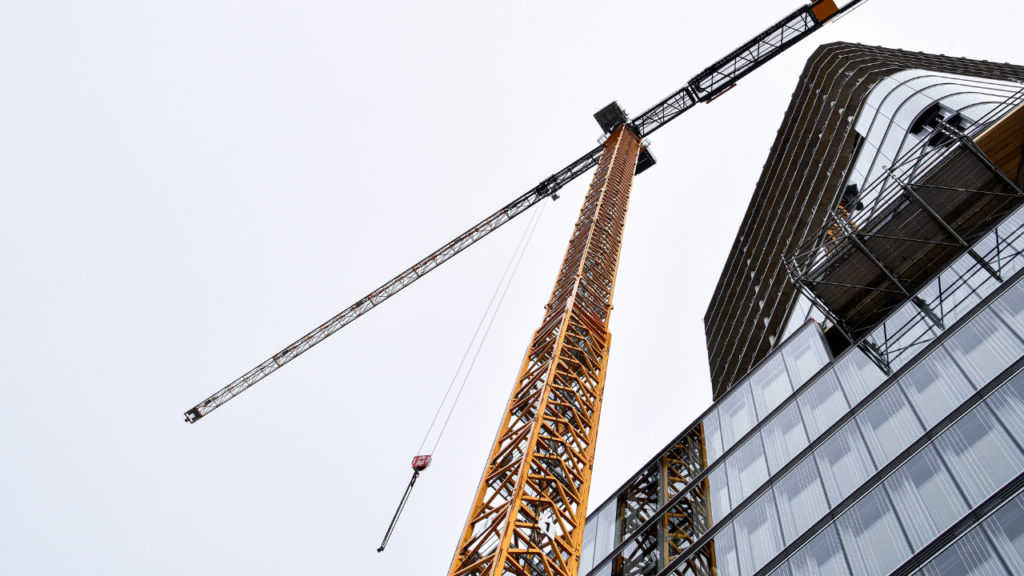If contractors and suppliers aren’t paid for their work on an Ohio construction project, they can file a mechanics lien to ensure they receive payment. A mechanics lien is a legal instrument that grants the unpaid party a security interest in the property.
At CRM Lien Services, we specialize in ensuring that you get paid quickly and reliably. We can prepare and file mechanics liens for you, taking into account Ohio mechanics lien law and state-specific rules and regulations.
This guide outlines the rules, requirements, and deadlines for filing a mechanics lien in Ohio.

Key Takeaways
- In Ohio, mechanics lien protection is extended to general contractors, subcontractors, laborers, suppliers, material suppliers, and construction managers. Suppliers to suppliers may also have lien rights, depending on their proximity to the property owner in the contracting chain.
- The deadline for filing a mechanics lien varies by project type. For most projects, it is 75 days from the last date of providing labor or materials. For residential projects, including single condominium units and 1-2 family dwellings, it is 60 days. Early filing is crucial to ensure lien rights are protected, especially for residential projects where payment to the general contractor can nullify the lien.
- After filing a mechanics lien, it is mandatory to notify the property owner and any other interested parties within 30 days. Proper service of the affidavit of lien is essential for the lien to attach to the property. For residential projects, the lien does not attach until the owner receives notice, making prompt notification vital.
Who Can File an Ohio Mechanics Lien?
In Ohio, mechanics lien protection extends to a broad range of construction participants, including general contractors, subcontractors, laborers, and suppliers at any level of the contracting chain. Construction managers are also granted lien rights under Ohio law. This ensures that those who contribute to the construction or improvement of a property have a legal avenue to secure payment.
Suppliers to suppliers may also have lien rights, although their eligibility depends on their degree of separation from the property owner within the contracting chain. The closer a supplier is to the direct contractual relationship with the property owner, the stronger their lien rights typically are. Additionally, a land contract vendee can also file a mechanics lien if they are the party contracting for the improvement.
Is a Written Contract Required to File a Mechanics Lien in Ohio?
In general, a written contract is not necessary to file a mechanics lien Ohio. According to Ohio lien statutes, individuals who provide labor and/or materials under either an express or implied contract are entitled to lien rights. However, relying on an oral contract can complicate the process. The lien claimant must provide an affidavit showing the first and last dates that they performed any labor or work or furnished any material to the improvement.
When Is the Deadline to File an Ohio Mechanics Lien?

In Ohio, the deadline for filing a mechanics lien varies based on the type of construction project:
- For most projects, the general deadline to file an Ohio mechanics lien is 75 days from the claimant’s last date of providing labor and/or materials to the project.
- For residential projects, including single condominium units and 1-2 family dwellings, the deadline is 60 days from the claimant’s last date of furnishing labor and/or materials. However, it is important to note that liens on residential projects will not attach if the general contractor has been paid in full before the notice of lien is received. Therefore, it is advisable for claimants on residential projects to file as early as possible to ensure their lien rights are protected.
Timely filing is crucial to permit lien claimants to identify the improvement and preserve their lien rights.
Where Do I File and Record an Ohio Mechanics Lien?
Ohio mechanics lien claims must be recorded with the county recorder’s office to be valid. It is essential to file the lien in the county where the construction job is physically located, as each Ohio county has its own specific rules and requirements. The Affidavit of Mechanic’s Lien must be prepared and filed in the county recorder’s office, and the Notice of Commencement should also be recorded and indexed in accordance with the relevant legal provisions and procedures of the county recorder.
Do I Need to Send Notice That the Mechanics Lien Was Recorded in Ohio?
Yes, a copy of the affidavit of lien must be served on the owner (or the owner’s designee) within 30 days of recording. This can be accomplished through the county sheriff, registered or certified mail with a return receipt requested, overnight delivery service, or personal service with a written receipt.
If service cannot be completed within this timeframe, a copy of the claim can be posted in a conspicuous place on the property within 10 days after the initial 30-day period expires (a total of 40 days from the date the claim was filed).
For residential projects, it is crucial to note that the lien does not attach to unpaid contract funds until the property owner receives notice. Therefore, it is in the best interest of the lien claimant to ensure the owner is served as soon as possible, especially if there is a chance the owner will make payment to the general contractor shortly after the lien is filed. Failure to properly serve notice can result in additional legal costs, including reasonable attorney fees incurred.
Additionally, if there is more than one owner, all owners must be served. This includes spouses and any part-owners or co-owners. The lien is only valid against the interests of the owners who have been properly served.
- Note: Receipt of the affidavit is presumed to occur three days after the claimant mails it unless a written acknowledgment, receipt, or other proof of receipt indicates otherwise.
Can I File an Ohio Mechanics Lien on a Condominium Project?

Yes. If the work is performed in common areas and authorized by the condo owner association, a lien may attach to the interests of all unit owners and their respective undivided interests in the common elements.
If work is performed on two or more units, each part owner or lessee is responsible for paying their respective portion pro rata.
Additionally, a lien may be filed on a single unit without the authorization or consent of the unit owner if the work was performed on that unit, the improvements were authorized by the condo owner’s board, and the improvements were necessary for public safety or to prevent damage to another part of the condo property.
5 Essential Things to Know About Ohio Mechanics Liens
Contractors and suppliers in Ohio possess strong lien rights. If they aren’t paid for their work on an Ohio job, filing a mechanics lien can expedite payment and offer protection. However, specific requirements and rules must be followed. Understanding Ohio’s mechanics lien law is crucial for protecting lien rights.
Here are five essential things to know about Ohio’s mechanics lien law:
1. Mechanics Lien Rights and Duration
In Ohio, general contractors, original contractors, subcontractors, laborers, suppliers, and construction managers all have mechanics lien rights. Unlike many other states, Ohio mechanics liens have a long shelf life, remaining effective for six years once filed.
2. Filing Deadlines Vary by Project Type
The deadline to file a mechanics lien in Ohio depends on the type of project:
- General Projects: For most projects, including commercial ones, the deadline is 75 days from the last date of furnishing labor or materials. These deadlines are mandated by Ohio lien law.
- Owner-Occupied Residences: For single condominiums and 1-2 family dwellings, the lien must be filed within 60 days from the last date of providing labor or materials. However, if the general contractor has been paid before the owner receives the lien notice, the lien will not attach. Therefore, early filing is advisable.
- Gas and Oil Wells: Liens on these projects must be filed within 120 days from the last date of providing materials or labor.
3. Notice of Furnishing Requirements
While sending a preliminary notice is always recommended, it is not always required:
- Family Residences and Condominiums: These projects do not require a preliminary notice.
- Other Projects: Generally, the property owner will file a Notice of Commencement. Project participants not directly in contact with the owner (excluding laborers) must file a Notice of Furnishing within 21 days from their first service or material provision. This notice must be sent via certified mail with a return receipt requested. If the owner has not filed a Notice of Commencement, preliminary notice is not required but recommended.
Additionally, if requested, project participants must provide a written notice of labor or materials provided within 10 days to preserve lien rights.
4. Notice of Recording the Lien
After filing a mechanics lien, it is mandatory to notify the property owner and any other interested parties (spouses, co-owners) within 30 days. If the owner cannot be served by mail or sheriff, the deadline extends to 40 days, and a copy of the lien can be posted conspicuously on the improvement. The lien does not attach to the property until the owner receives notice, so prompt notification is crucial to prevent the owner from making payments that could limit mechanics lien rights.
5. Releasing the Lien After Payment
Once a mechanics lien has been filed and payment received, the lien must be released within 30 days of satisfaction. Failure to release the lien can make the project participant liable for any subsequent damages the property owner incurs, up to the amount of the lien or contract.
By understanding and following these rules, contractors and suppliers can effectively use mechanics liens to secure their payment rights in Ohio.
How to File a Mechanics Lien in Ohio?

Filing a mechanics lien in Ohio is a powerful tool for contractors and suppliers to secure payment for their work. A mechanics lien attaches to the real property where the work was performed. Understanding the process and adhering to the specific requirements is crucial for the lien to be enforceable. Here’s a step-by-step guide based on the comprehensive instructions provided by CRM Lien.
Step 1: Determine Eligibility
Before filing a mechanics lien, verify your eligibility:
- Who can file? General contractors, subcontractors, laborers, material suppliers, and construction managers. These parties are collectively known as lien claimants.
- What projects qualify? All types of construction projects, including commercial, residential, and industrial.
Step 2: Understand the Deadlines
Deadlines for filing a mechanics lien in Ohio vary based on the type of project:
- General Projects: 75 days from the last date of furnishing labor or materials.
- Owner-Occupied Residences: 60 days from the last date of providing labor or materials. However, if the general contractor is paid before the owner receives the lien notice, the lien will not attach. Early filing is advisable.
- Gas and Oil Wells: 120 days from the last date of providing materials or labor.
Step 3: Send Preliminary Notice (if required)
While not always mandatory, sending a preliminary notice is recommended:
- Family Residences and Condominiums: No preliminary notice is required.
- Other Projects: If a Notice of Commencement is filed by the property owner, project participants must file a Notice of Furnishing within 21 days of first providing labor or materials. Send via certified mail with the return receipt requested.
Step 4: Prepare the Lien Document
Prepare your mechanics lien document with the following information:
- Claimant’s name and address
- Property owner’s name and address
- Description of labor or materials provided
- Amount due
- Property description (sufficient for identification)
Step 5: File the Lien with the County Recorder’s Office
File the lien in the county where the property is located. Each county in Ohio may have specific formatting requirements, deadlines, and fees. Ensure you comply with the local rules.
Step 6: Serve Notice of the Lien
Serve a copy of the affidavit of lien on the property owner (or their designee) within 30 days of recording. This can be done via:
- County sheriff
- Registered or certified mail with return receipt requested
- Overnight delivery service
- Personal service with a written receipt
If the owner cannot be served within this timeframe, post a copy of the lien in a conspicuous place on the property within 10 days after the initial 30-day period (a total of 40 days from the filing date).
Step 7: Release the Lien Upon Payment
After receiving payment, release the lien within 30 days to avoid liability for any damages incurred by the property owner after satisfaction of the lien. The amount of liability cannot exceed the lien or contract amount.
Get in Touch
Filing a mechanics lien in Ohio is an essential process for contractors and suppliers to ensure they receive payment for their work. By understanding and following the specific rules, requirements, and deadlines outlined in this guide, you can protect your right to payment and avoid potential financial losses.
At CRM Lien Services, we have been serving customers across the country with required reference documentation for lien claims since 1986. We have a wealth of expertise, are licensed and insured, and have a team of highly knowledgeable document processors. If you’re looking for a straightforward process for filing a mechanics lien, give us a call or shoot us an email.
We would love to work with you and help you lower your risk and get paid fast!
